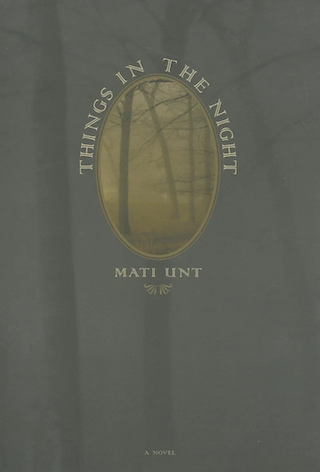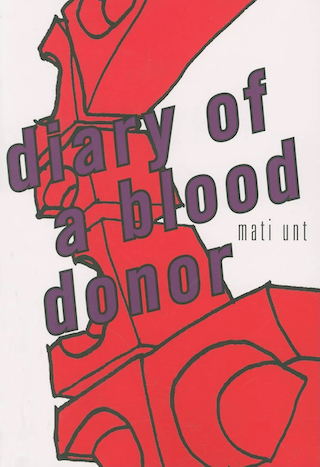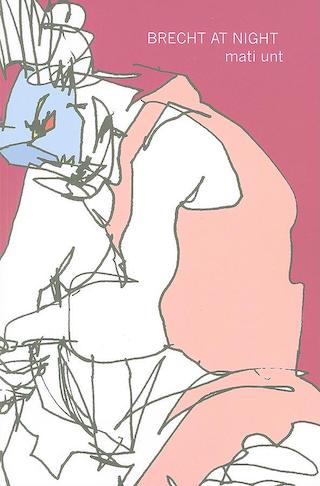Mati Unt (1944-2005)
This piece originally appeared in CONTEXT 18, shortly after Mati Unt’s passing. It was written by the translator Eric Dickens, Unt’s translator, who also left us in 2017.

Mati Unt was born in Estonia and lived there all his life. He spent his early years in the village of Linnamäe near the university town of Tartu. His life, like that of so many Estonians, was rooted in the countryside and nature, something evident in all of his works. Unt doubled as one of the most influential modernist, and latterly postmodernist, authors in Estonia, as well as being a playwright, director, and producer, staging plays at several theaters in the Estonian capital, Tallinn.
* * *
Unt made his breakthrough as an author early in life, publishing his first prose in the early 1960s while still at school, and later while studying literature and journalism at Tartu University, near the village where he was born. He belonged to the Sixties Generation, which denotes a number of Estonian writers born in the 1940s and who emerged as writers and intellectuals some twenty years later. During the years leading up to the Prague Spring of 1968, Estonian intellectuals had high hopes of a Dubãek-style “socialism with a human face.” Their hopes were soon dashed. Nevertheless, Estonia had always managed to evade the full brunt of Soviet repression and censorship.
In the 1960s and ’70s, when Stalinism had waned, key works of international literature were made available in translation to the citizens of the Estonian Soviet Socialist Republic by such authors as Whitman, Faulkner, Salinger, Scott Fitzgerald, Wilder, Malamud, Baldwin, Capote, Updike, Oates, Bellow, Golding, Bergman (film scripts), Kafka, Borges, Butor, and Camus. This was thanks to an unusual initiative, a weekly addition to one of the cultural monthlies where many shorter works of international literature managed to appear. In 1964, Jean-Paul Sartre and Simone de Beauvoir made a brief visit to Estonia, and even works that were frowned upon by the central Soviet authorities—such as Aleksandr Solzhenitsyn’s One Day in the Life of Ivan Denisovich and Mikhail Bulgakov’s The Master and Margarita—were published in the Estonian language. Presumably the Soviet authorities thought that the translation of controversial works into a language used by no more than one million people could do little or no harm to the predominantly Russian-speaking USSR.
* * *
For much of his working life, Mati Unt was involved with the theater, staging plays regularly from 1981, when he became the director and scriptwriter for the Youth Theater in Tallinn. It is often thought that the Soviet Union was entirely cut off from Western theatrical trends, but this is not entirely true. During the 1960s thaw, new ideas in the theater seeped in through the Iron Curtain and from the more liberal satellite states to the Soviet Union itself. In time, names such as Artaud, Grotowski, and Peter Brook became familiar to Estonians.
Over the past decades, Unt staged many plays of international renown by dramatists such as Sophocles, Corneille, Shakespeare, Goethe, Schiller, Strindberg, Ibsen, Chekhov, Gombrowicz, Genet, Weiss, Havel, and Beckett, plus adaptations of Euripides and Bulgakov, many of these at the Vanemuine Theater in Tartu. One of the last plays he staged was Harold Pinter’s The Caretaker, in the provincial town of Rakvere, and before his death Unt was working on a stage adaptation of Emily Brontë’s Wuthering Heights.
Mati Unt also wrote several plays of his own. As early as 1967, Unt was experimenting with the introduction of Brechtiantechniques to Ancient Greek material in his play Phaethon, Son of the Sun. Perhaps Unt’s most complex stage play was Dress Rehearsal (1977) where in Pirandellian fashion he examined the life of a Soviet revolutionary through actors on a film set performing in and discussing what is in fact a rather hackneyed adaptation. The real revolutionary, now an old man, stands around the set giving monosyllabic advice, and seems rather indifferent to the myth his life is being turned into.
* * *
Still, it is as a renewer of Estonian prose that Unt will be best remembered, at home and especially abroad. The leitmotifs and style of Mati Unt’s fiction changed little from when he first began publishing in the 1960s and was regarded as something of a Wunderkind. Unt’s prose is rooted in the mythology of everyday life, personal relationships, sexuality, and especially that of modern urban living—although the national trauma of the Soviet occupation always lurks under the surface. To this he added the deadpan humor of the eternal observer, someone who never quite succeeds in getting fully involved with other people, and yet is always present amongst them.
Unt was always interested in popular science; the most unexpected associations and references appear in his works. He was also keen on examining paranormal, esoteric, and pathological phenomena, like vampires, werewolves, cannibals, sex criminals, and those driven by obsessions and idées fixes. One critic says: “Unt’s interest in everything . . . was phenomenal. He read rapidly and much, his memory was first class and concrete, and he synthesized what he read. You could always ask him about things in many fields.”
 Unt’s early novels clearly show the direction he was moving in. His first novel, Farewell, Yellow Cat!, appeared in his school annual in 1963. Here the protagonist is in an ideological battle with his aunt, a homeowner—something that was rather politically incorrect in the Soviet days. Anything harking back to bourgeois times (i.e. the 1930s of independence and the authoritarian rule of President Päts) had to be painted in a negative light. But by mentioning them at all, Unt was taking a stand.
Unt’s early novels clearly show the direction he was moving in. His first novel, Farewell, Yellow Cat!, appeared in his school annual in 1963. Here the protagonist is in an ideological battle with his aunt, a homeowner—something that was rather politically incorrect in the Soviet days. Anything harking back to bourgeois times (i.e. the 1930s of independence and the authoritarian rule of President Päts) had to be painted in a negative light. But by mentioning them at all, Unt was taking a stand.
Then came the novella The Debt (1964), which caused a literary storm. Under the edicts of Socialist Realism, Soviet literature was in those days supposed to provide models for how people should conduct their lives. Instead, Unt chose a protagonist who was having sex while still at school, and who gets a girl pregnant, something which was shocking to the hypocritically puritan Soviet society. Critic Tiit Hennoste regards this novella as Unt’s key work: “It was the first work of Estonian literature in Soviet times that caused a real scandal, and endless disputes about the behavior of the young.”
In 1970, Unt produced a Kafkaesque murder-mystery parody called Murder at the Hotel, and two years later wrote a love-triangle novella called An Empty Beach, where a young married writer has to contend with the advances made to his wife by a violinist—and which, he claimed, contains elements of self-mockery. A film version of this novella was scheduled to start shooting in late August 2005, and will continue despite the author’s death.
Under the same cover was Mattias and Kristiina, which is again about a young couple struggling against society, and who endup in a kind of Tristan-and-Isolde tragedy.
This was followed in 1975 by the novella And If We Are Not Dead, Then We Are Alive Right Now. This deals with werewolves and contains numerous references to literature on the same subject, a stylistic trait that remained constant in the rest of Unt’s oeuvre.
Unt’s most famous novel, Autumn Ball (1979), was translated into English—as well as Russian, Finnish, Swedish, and other languages—back in the Soviet era, and tells the story of six people living in apartments in the Tallinn high-rise suburb of Mustamäe, and who are destined to meet at the end of the novel: a poet, an architect who is a technocrat and futurist, a misanthropic barber, and a TV-addicted woman and her young son. Here, Unt’s coolly objective yet tongue-in-cheek style and interest in popular science came into their own. Apart from Things in the Night, this is the only novel by Unt made available in English. [Ed Note: At the time of writing, these were the only Unt titles in English. See below for a complete, current list.]
Unt’s novels and stories, as well as a few plays, were collected in two volumes in 1985, totaling some 650 pages. But Unt was not finished as an author. Some of his most significant work was still to come.
The following year, Unt published a volume of novellas and other short texts entitled They Speak and Keep Silent. Critics talkhere of polyphony in the Bakhtinian sense, claiming that while there was the germ of this already in Autumn Ball, by now Unthad abandoned the traditional role of a narrator. These texts include the semi-theatrical dialogue of a woman and a taxi-driver; a short play about the nineteenth-century poet Lydia Koidula (see below) and the twentieth-century author of folk tales Aino Kallas; diary entries by a woman whose husband disappears without trace; and a postmodern text that comments on the translation of a poem by Dante Gabriel Rossetti.
Things in the Night, Unt’s second-longest novel, and second to be translated into English, appeared as Öös on asju in 1990, and deals with electricity in all its forms: a source of urban heating and lighting, but also a dangerous and untamed force. Unt also incorporates other devices from his stock of trivia: pigs, cacti, holography, urban cannibalism, and the ever-present blocks of high-rise apartments found throughout the former Soviet Union. Things in the Night continues in the postmodern vein of They Speak and Keep Silent, being full of game playing, anarchic behavior, absence, schizophrenia, and irony. Nevertheless, there is, as in similar works from the former Soviet Bloc, a touch of light moralism in the novel. The Estonian critic Kalev Kesküla sums the work up as follows:
The novel consists of the author’s confessions, novel fragments, snatches of plays, comments on how to write a novel, poems, minutes of interrogations, letters, and quite a few quotes from popular classics. There are amusing adventures and pointless ratiocinations. From time to time, the writer-protagonist personifies the compulsive scribbler who is unable to curb his urge to write when attempting to describe electricity, who tells yarns about accidents and shops. The characters in the novel have strayed into a world where other people’s words, clichéd behavior, and serious scientific literature are jumbled up together. In its artistic radicalism, the novel is very modernist, while very postmodern in its zest for irony. The ideas that bear the novel along appear to be a fear of people and an underlying misanthropy, themes familiar from Unt’s earlier works. Here again we have the criminals, farmers who set their dogs on those wandering through the night, arctic hysteria, and cannibalism.
 In 1990, the same year as Things in the Night, Unt published a second novel, Diary of a Blood Donor. This is the usual Untian mixture of fact and fiction, and takes one of the most sacred names in Estonian literature in vain. Lydia Koidula (1843-1886) is regarded as the first Estonian woman poet of significance, and also the first poet to express an Estonian longing for independence and freedom. But Unt rather blasphemously weaves this national icon and her Latvian doctor and husband into a postmodern tale of vampires and a mysterious trip to Leningrad. While the leitmotif of Things in the Night is electricity, that of Diary of a Blood Donor is, predictably, blood.
In 1990, the same year as Things in the Night, Unt published a second novel, Diary of a Blood Donor. This is the usual Untian mixture of fact and fiction, and takes one of the most sacred names in Estonian literature in vain. Lydia Koidula (1843-1886) is regarded as the first Estonian woman poet of significance, and also the first poet to express an Estonian longing for independence and freedom. But Unt rather blasphemously weaves this national icon and her Latvian doctor and husband into a postmodern tale of vampires and a mysterious trip to Leningrad. While the leitmotif of Things in the Night is electricity, that of Diary of a Blood Donor is, predictably, blood.
After 1990, Unt published only one major work of fiction, but one with special international resonance. This was a documentary novel about Bertolt Brecht’s meeting with the Estonian-born Hella Wuolijoki, who later became a Communist and broadcaster in neighboring Finland, and is entitled Brecht at Night. (The night was clearly something with which Unt had affinities.) In true Untian style, the author mixes episodes from the history of Estonia and Finland in a tale centered around World War II, including historical documents and a rather playful description of the very bourgeois and somewhat fastidiousBrecht, who would like to feel at home with the workers, but is too busy with his “alienation effect” and mistresses.
* * *
 In one of a series of articles written to mark Unt’s sixtieth birthday—January 1, 2004—Ms. Marju Lauristin, who remembered him from his early days as a writer, wrote an appreciation entitled “Mati Unt’s Blogosphere.” In it she examines Unt’s last literary guise—that of a columnist in the cultural press, where he wrote short pieces that almost resembled “blog” entries, recording his comments on life on a weekly basis. Lauristin, now a professor of media studies, remembers Unt as someone the world was “very text-centered, sound-centered, centered on the life of the mind.”
In one of a series of articles written to mark Unt’s sixtieth birthday—January 1, 2004—Ms. Marju Lauristin, who remembered him from his early days as a writer, wrote an appreciation entitled “Mati Unt’s Blogosphere.” In it she examines Unt’s last literary guise—that of a columnist in the cultural press, where he wrote short pieces that almost resembled “blog” entries, recording his comments on life on a weekly basis. Lauristin, now a professor of media studies, remembers Unt as someone the world was “very text-centered, sound-centered, centered on the life of the mind.”
* * *
Mati Unt lies buried in the writer’s corner of the Metsakalmistu cemetery in Tallinn, where he rubs shoulders in death with many of the key figures of nineteenth- and especially twentieth-century Estonian literature, their graves all grouped together rather like those in Poets’ Corner in Westminster Abbey—but in a more modest, truly Estonian manner. The vaults of the abbey are here replaced by the branches of trees.
Come back on Wednesday to read an excerpt from Diary of a Blood Donor.
Selected Works by Mati Unt in Translation:
Autumn Ball. Trans. Mart Aru. Out of Print.
Brecht at Night. Trans. Eric Dickens. Dalkey Archive Press, $13.95.
Diary of a Blood Donor. Trans. Ants Eert. Dalkey ArchivePress, $12.95.
Things in the Night. Trans. Eric Dickens.
Selected Untranslated Works:
Hüvasti, kollane kass! [Farewell, Yellow Cat!]. Keskkooli almanahh.
Mõrv hotellis [Murder at the Hotel]. Periodika.

Leave a Reply